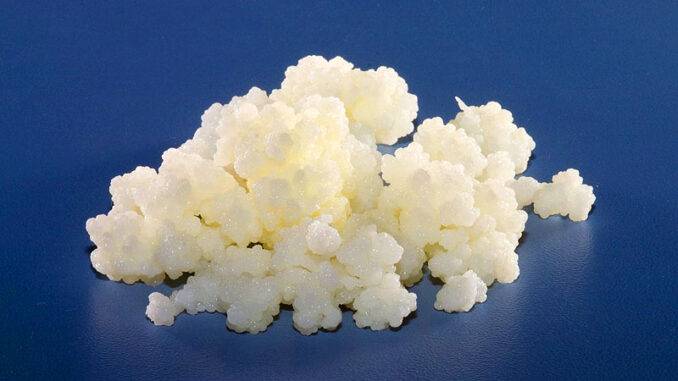
First of all, remember that the best and most natural way to take care of your Kefir grains is to never stop making Kefir. That’s by far the best way to keep your Kefir SCOBY constantly thriving and in good shape.
Just keep on feeding your Kefir grains with fresh milk, and they will stay healthy for years.
However, this may not always be possible. Sometimes, when you have an excess of ready Kefir drink or need to leave the house for a couple of days or weeks, you need to find a way to somehow preserve your Kefir grains and store them safely.
There are two ways you may store your Kefir grains:
- For shorter periods, Kefir grains should just be put in the fridge and fed with fresh milk every 5 or 6 days.
- For longer periods, however, the grains of Kefir should be dried in a specific way, and then they can be frozen.
Let’s dig deeper into this.
The storage and preservation method to apply depends on the duration of the needed “time-out”.
As we said, for shorter periods (up to 5 days), you may put your Kefir grains into the fridge in a jar filled with slightly diluted milk.
The lower temperature in the refrigerator will considerably slow down all metabolic and fermentation processes. At the same time, the milk will still provide your Kefir microbial colony with the needed food that will prevent it from starving.
If you need to store your Kefir grains for a slightly more extended period (up to a month), you may still apply this method, but you will need to change the milk about once a week. It will give the needed fresh food to Kefir’s bacteria and will not let them starve.
After such “time-outs”, we can directly use the grains without any reactivation to prepare the next Kefir brew.
Drying and freezing Kefir grains
If you need to preserve and store your Kefir grains for longer periods (several months, even a year or more), Kefir grains have to be desiccated (dried out). Drying out Kefir grains, and subsequently freezing them, will put the microorganisms in a state of anabiosis, which is, in fact, a temporary state of suspended animation with significantly reduced metabolism up to a complete standstill.
To dry the Kefir grains, rinse them with cool filtered water, then carefully dry them for several days at room temperature, covered with clean gauze, cheesecloth, or paper towel.
After about 2-3 days, when the grains already get perfectly dry, acquiring a typical yellowish color, put them in a plastic zip-lock bag and sprinkle them with powdered milk. Powdered milk will additionally extract any remaining water in the grains, while partially providing them with food.
After that, you may place the tightly sealed plastic bag in the freezer for a practically unlimited period.
Reactivation of the Kefir grains
After being stored in anabiosis for long periods, Kefir grains need to be “revived”, or in other words – reactivated.
Reactivation is done by rinsing the grains with filtered water and placing them back in fresh milk at room temperature. Reactivation may take several milk changes every 24 hours until the Kefir grains acquire their characteristic white color, cauliflower look, and typical texture. Additionally, the Kefir grains will start to form again their slimy layer of Kefiran, which is their much-needed “living environment”.
Then, the proper bacterial balance of the culture is restored, and you can use Kefir grains as usual. Note, however, that it is not recommended to consume the milk mixtures during the period of reactivation.
Also, note that during the phase of reactivation, the bacteria in Kefir grains are still weak and can be contaminated with unwanted microorganisms that may reduce their life and affect the taste of Kefir. So, to protect the grains against unwanted contaminations, all containers and tools should be thoroughly washed and sanitized.
Freezing the Kefir grains without drying them
Several of our readers told us that when they needed to temporarily stop making Kefir temporarily, they directly put their Kefir grains in the freezer and froze them.
Although this method may sometimes work one way or another, we do not recommend it.
And here is the reason: Kefir grains are usually immersed in milk and contain a lot of water. At low temperatures, water is known to form solid ice crystals inside the cells that may destroy the cell walls and structure of the Kefir grains, thus deteriorating their bacteria.
Although this does not happen very often due to the presence in Kefir of the jelly-like substance called Kefiran, we do not advise you to take the risk of directly freezing your Kefir grains. We believe that Kefir grains should be frozen only if previously dried.



